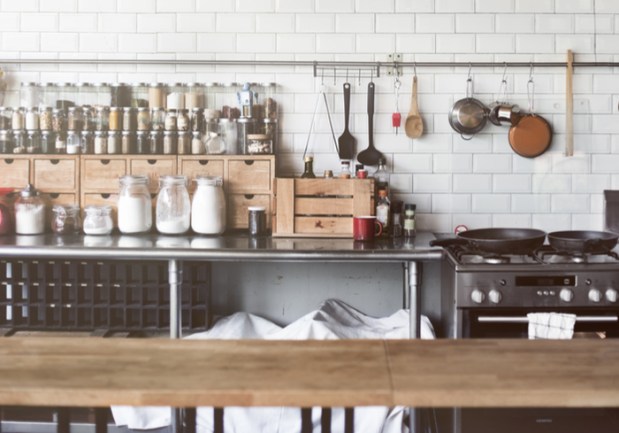Food Delivery Services Expand Ordering Options With Shared Kitchens

Food delivery services are rolling out new brick-and-mortar concepts that serve dual purposes. Deliveroo, in one example, has created a space called the Deliveroo Food Market that serves both the customer walking in for a meal and the one looking to order online. The concept appears to be part food hall, with 15 dining concepts for diners to choose from, as well as part fulfillment center, with kitchen space for eCommerce orders.
Deliveroo General Manager Brian Lo told CNBC that such a model is beneficial for the company and for those that run restaurants in the region where real estate comes at a premium. “We find there is an opportunity to bring our online-to-offline model to our customers,” he said. “Hong Kong is one of the most expensive rental prices, so the pressure on restaurant operators is very high and this model works very well for them.”
Five restaurants will reportedly call the market home, serving up a range of international cuisines, such as Hawaiian fish and Shanghai noodles. The space also provides more than one on-the-go option: Customers can either order meals for takeout or opt to have their meals delivered.
In addition, the space provides restauranteurs with the opportunity to experiment. The Chinese restaurant chain Crystal Jade sees the space as a place to pilot new brands. Wincy Cheung, the company’s assistant marketing and communications director, told the outlet, “This is a location [where] we can have a closer touch with the residents nearby and understand their dining behavior.” Another eatery, Pizza Express, is looking to use part of its space to experiment with a pasta concept.
While the Deliveroo Food Market might have just arrived in Hong Kong, the food delivery service is no stranger to offering restaurants with places to prepare food. It has a global “Editions” program that provides shared kitchens to restauranteurs. According to CNBC, those kitchens are located in “strategic neighborhoods,” allowing restaurants to operate without the kinds of expenses that typically come with a space that can diners visit.
Shared Kitchen Space
Thousands of miles away from Hong Kong, Deliveroo has a shared kitchen space in Paris. In July, the company reportedly had space for 12 kitchens in a warehouse in Saint-Ouen, which is adjacent to the French capital. According to reports, restaurants can either begin using the space at no charge in exchange for higher fees or they can pay rent. Deliveroo said, according to reports, that “they are popular with local people, chefs and restaurants who use them to expand in to new areas.”
In the United States, Kitchen United gives restaurants the chance to lease space in large facilities that can accommodate different concepts in so-called “kitchen centers.” These places don’t have dining rooms and are, at times, called ghost kitchens – but they do allow restaurants to prepare food, which can be picked up by delivery people or diners. This year, the company opened a 12,000-square-foot facility that is home to 15 restaurants, as reported in October. And in September, the firm announced it had notched $10 million in a Series A funding round, which was led by Alphabet’s venture capital arm GV.
When restaurants enter the digital world, they may make adjustments to adapt to an eCommerce environment, such as narrowing down their menus to 30 items or less in order to have good visibility on a mobile device or favor high-margin options. It can also be important for restaurants to have a picture for every menu item. “Restaurants have to start thinking of themselves as eCommerce businesses,” Kitchen United CEO Jim Collins told PYMNTS in a previous interview.
But for new concepts like the Deliveroo Food Market, online retailers are allowing restaurants to take a step into digital delivery, while still providing customers with the more traditional option of visiting a physical location to pick up their next meal if they don’t want to order online.